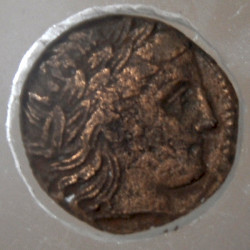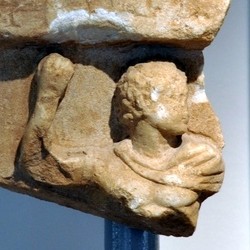Dion, Archaeological Park and Museum
Q4785396The Archaeological Park of Dion is what the name suggests it is: a park, indeed, with ruins. I visited the place for the first time in 1991, and only remembered that I had been impressed. Today, I returned, and found it to be not only extremely interesting, but also one of the loveliest places I have ever been. It is bizarre that I have no memories of my first visit.
What makes it special is that it is very green – a park, like I said, where you will often find yourself in the shade. Among the ruins are the city walls, a small odeon, a bathhouse with some good mosaics, a fine church, several luxurious mansions, latrines, temples to various deities, two theaters, and the altar of Zeus Olympius, for which the city was once famous. With the possible exception of the temple of Isis, none of it is unique, but the lofty vegetation and the river Baphyras make it a very special site.
But it’s not just the trees that make a visit a delight. There are small fountains with water that, odd though this may seem, tastes really delicious – better than Greece’s mineral waters. Walking around is very easy, because there are excellent explanatory signs. There is always a map of the entire complex, there are photos of the objects found in this building, and there is often a map or a drawing of what it once must have looked like. The bottom of the sign always indicates the distance and direction to the next monuments. The description itself, in two languages, is excellent. You really feel taken seriously.
You will need more than half a day to study it all, but the small bar in the entrance building offers good coffee. The museum is a few minutes away and is, again, good. You will see a lot of sculpture. The only really beautiful one is an Artemis from a sanctuary at the mouth of the Baphyras, but that does not mean that the other statues are uninteresting. Their lack of quality illustrates that Dion was a provincial town that could not afford the best sculptors. There are also several tomb finds and inscriptions. Except for a water organ, nothing is unique, but the museum is fine. The archaeological institute, across the street, displays some objects that have not been registered yet.
Dion is in Greece, far away from my own country. In the mid-fourth century, its bishop attended the Synod of Serdicca, where he must have met Servatius, the bishop of Tongeren and Maastricht – cities in what are now Belgium and the Netherlands. When I realized this, I briefly understood what it meant to be a citizen of the Roman Empire. Of course, we’re all theoretically aware that back then a large territory was ruled by one government, but you only know what that means when you’re standing underneath an unDutch sun, looking at the ruin of an ancient church, and realize that the believers belonged to the same state as your ancestors.
All in all, I think that I am not exaggerating when I say that, after Athens, Delphi, Corinth, Messene, and Olympia, Dion is one of Greece’s top sites – you just must visit it.
This museum was visited in 1991, 2010.





